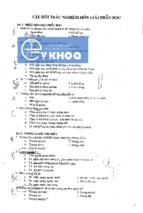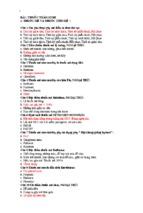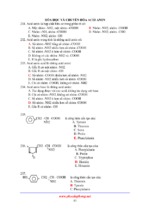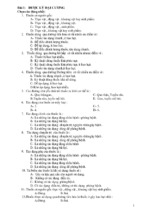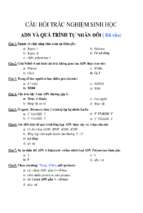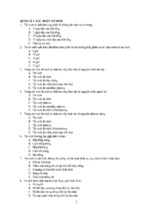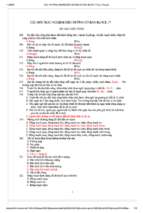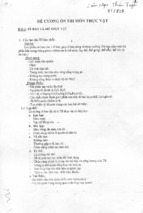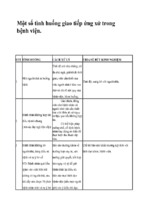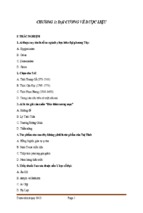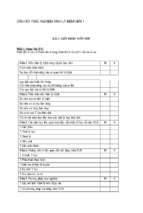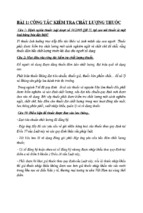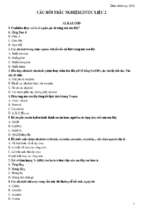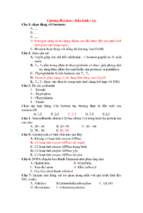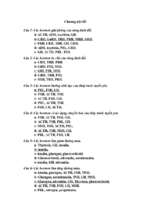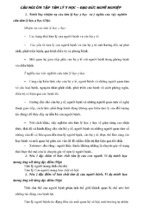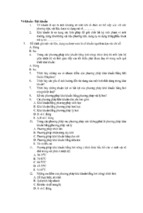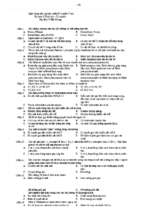Hajnos/Thin Layer Chromatography in Phytochemistry 46772_C000 Final Proof page i 28.1.2008 7:41am Compositor Name: PJayaraj
Thin Layer Chromatography
in Phytochemistry
Hajnos/Thin Layer Chromatography in Phytochemistry 46772_C000 Final Proof page ii
28.1.2008 7:41am Compositor Name: PJayaraj
CHROMATOGRAPHIC SCIENCE SERIES
A Series of Textbooks and Reference Books
Editor: JACK CAZES
1.
2.
3.
4.
5.
6.
7.
8.
9.
10.
11.
12.
13.
14.
15.
16.
17.
18.
19.
20.
21.
Dynamics of Chromatography: Principles and Theory,
J. Calvin Giddings
Gas Chromatographic Analysis of Drugs and Pesticides,
Benjamin J. Gudzinowicz
Principles of Adsorption Chromatography: The Separation of Nonionic
Organic Compounds, Lloyd R. Snyder
Multicomponent Chromatography: Theory of Interference,
Friedrich Helfferich and Gerhard Klein
Quantitative Analysis by Gas Chromatography, Josef Novák
High-Speed Liquid Chromatography, Peter M. Rajcsanyi
and Elisabeth Rajcsanyi
Fundamentals of Integrated GC-MS (in three parts),
Benjamin J. Gudzinowicz, Michael J. Gudzinowicz,
and Horace F. Martin
Liquid Chromatography of Polymers and Related Materials, Jack Cazes
GLC and HPLC Determination of Therapeutic Agents (in three parts),
Part 1 edited by Kiyoshi Tsuji and Walter Morozowich, Parts 2 and 3
edited by Kiyoshi Tsuji
Biological/Biomedical Applications of Liquid Chromatography,
edited by Gerald L. Hawk
Chromatography in Petroleum Analysis, edited by Klaus H. Altgelt
and T. H. Gouw
Biological/Biomedical Applications of Liquid Chromatography II,
edited by Gerald L. Hawk
Liquid Chromatography of Polymers and Related Materials II,
edited by Jack Cazes and Xavier Delamare
Introduction to Analytical Gas Chromatography: History, Principles,
and Practice, John A. Perry
Applications of Glass Capillary Gas Chromatography, edited by
Walter G. Jennings
Steroid Analysis by HPLC: Recent Applications, edited by
Marie P. Kautsky
Thin-Layer Chromatography: Techniques and Applications,
Bernard Fried and Joseph Sherma
Biological/Biomedical Applications of Liquid Chromatography III,
edited by Gerald L. Hawk
Liquid Chromatography of Polymers and Related Materials III,
edited by Jack Cazes
Biological/Biomedical Applications of Liquid Chromatography,
edited by Gerald L. Hawk
Chromatographic Separation and Extraction with Foamed Plastics
and Rubbers, G. J. Moody and J. D. R. Thomas
Hajnos/Thin Layer Chromatography in Phytochemistry 46772_C000 Final Proof page iii 28.1.2008 7:41am Compositor Name: PJayaraj
22. Analytical Pyrolysis: A Comprehensive Guide, William J. Irwin
23. Liquid Chromatography Detectors, edited by Thomas M. Vickrey
24. High-Performance Liquid Chromatography in Forensic Chemistry,
edited by Ira S. Lurie and John D. Wittwer, Jr.
25. Steric Exclusion Liquid Chromatography of Polymers, edited by
Josef Janca
26. HPLC Analysis of Biological Compounds: A Laboratory Guide,
William S. Hancock and James T. Sparrow
27. Affinity Chromatography: Template Chromatography of Nucleic Acids
and Proteins, Herbert Schott
28. HPLC in Nucleic Acid Research: Methods and Applications,
edited by Phyllis R. Brown
29. Pyrolysis and GC in Polymer Analysis, edited by S. A. Liebman
and E. J. Levy
30. Modern Chromatographic Analysis of the Vitamins, edited by
André P. De Leenheer, Willy E. Lambert, and Marcel G. M. De Ruyter
31. Ion-Pair Chromatography, edited by Milton T. W. Hearn
32. Therapeutic Drug Monitoring and Toxicology by Liquid
Chromatography, edited by Steven H. Y. Wong
33. Affinity Chromatography: Practical and Theoretical Aspects, Peter Mohr
and Klaus Pommerening
34. Reaction Detection in Liquid Chromatography, edited by Ira S. Krull
35. Thin-Layer Chromatography: Techniques and Applications,
Second Edition, Revised and Expanded, Bernard Fried
and Joseph Sherma
36. Quantitative Thin-Layer Chromatography and Its Industrial
Applications, edited by Laszlo R. Treiber
37. Ion Chromatography, edited by James G. Tarter
38. Chromatographic Theory and Basic Principles, edited by
Jan Åke Jönsson
39. Field-Flow Fractionation: Analysis of Macromolecules and Particles,
Josef Janca
40. Chromatographic Chiral Separations, edited by Morris Zief
and Laura J. Crane
41. Quantitative Analysis by Gas Chromatography, Second Edition,
Revised and Expanded, Josef Novák
42. Flow Perturbation Gas Chromatography, N. A. Katsanos
43. Ion-Exchange Chromatography of Proteins, Shuichi Yamamoto,
Kazuhiro Naka-nishi, and Ryuichi Matsuno
44. Countercurrent Chromatography: Theory and Practice,
edited by N. Bhushan Man-dava and Yoichiro Ito
45. Microbore Column Chromatography: A Unified Approach
to Chromatography, edited by Frank J. Yang
46. Preparative-Scale Chromatography, edited by Eli Grushka
47. Packings and Stationary Phases in Chromatographic Techniques,
edited by Klaus K. Unger
48. Detection-Oriented Derivatization Techniques in Liquid
Chromatography, edited by Henk Lingeman and Willy J. M. Underberg
49. Chromatographic Analysis of Pharmaceuticals, edited by
John A. Adamovics
50. Multidimensional Chromatography: Techniques and Applications,
edited by Hernan Cortes
51. HPLC of Biological Macromolecules: Methods and Applications,
edited by Karen M. Gooding and Fred E. Regnier
Hajnos/Thin Layer Chromatography in Phytochemistry 46772_C000 Final Proof page iv 28.1.2008 7:41am Compositor Name: PJayaraj
52. Modern Thin-Layer Chromatography, edited by Nelu Grinberg
53. Chromatographic Analysis of Alkaloids, Milan Popl, Jan Fähnrich,
and Vlastimil Tatar
54. HPLC in Clinical Chemistry, I. N. Papadoyannis
55. Handbook of Thin-Layer Chromatography, edited by Joseph Sherma
and Bernard Fried
56. Gas–Liquid–Solid Chromatography, V. G. Berezkin
57. Complexation Chromatography, edited by D. Cagniant
58. Liquid Chromatography–Mass Spectrometry, W. M. A. Niessen
and Jan van der Greef
59. Trace Analysis with Microcolumn Liquid Chromatography,
Milos KrejcI
60. Modern Chromatographic Analysis of Vitamins: Second Edition,
edited by André P. De Leenheer, Willy E. Lambert, and Hans J. Nelis
61. Preparative and Production Scale Chromatography, edited by
G. Ganetsos and P. E. Barker
62. Diode Array Detection in HPLC, edited by Ludwig Huber
and Stephan A. George
63. Handbook of Affinity Chromatography, edited by Toni Kline
64. Capillary Electrophoresis Technology, edited by Norberto A. Guzman
65. Lipid Chromatographic Analysis, edited by Takayuki Shibamoto
66. Thin-Layer Chromatography: Techniques and Applications:
Third Edition, Revised and Expanded, Bernard Fried
and Joseph Sherma
67. Liquid Chromatography for the Analyst, Raymond P. W. Scott
68. Centrifugal Partition Chromatography, edited by Alain P. Foucault
69. Handbook of Size Exclusion Chromatography, edited by Chi-San Wu
70. Techniques and Practice of Chromatography, Raymond P. W. Scott
71. Handbook of Thin-Layer Chromatography: Second Edition,
Revised and Expanded, edited by Joseph Sherma and Bernard Fried
72. Liquid Chromatography of Oligomers, Constantin V. Uglea
73. Chromatographic Detectors: Design, Function, and Operation,
Raymond P. W. Scott
74. Chromatographic Analysis of Pharmaceuticals: Second Edition,
Revised and Expanded, edited by John A. Adamovics
75. Supercritical Fluid Chromatography with Packed Columns: Techniques
and Applications, edited by Klaus Anton and Claire Berger
76. Introduction to Analytical Gas Chromatography: Second Edition,
Revised and Expanded, Raymond P. W. Scott
77. Chromatographic Analysis of Environmental and Food Toxicants,
edited by Takayuki Shibamoto
78. Handbook of HPLC, edited by Elena Katz, Roy Eksteen,
Peter Schoenmakers, and Neil Miller
79. Liquid Chromatography–Mass Spectrometry: Second Edition,
Revised and Expanded, Wilfried Niessen
80. Capillary Electrophoresis of Proteins, Tim Wehr,
Roberto Rodríguez-Díaz, and Mingde Zhu
81. Thin-Layer Chromatography: Fourth Edition, Revised and Expanded,
Bernard Fried and Joseph Sherma
82. Countercurrent Chromatography, edited by Jean-Michel Menet
and Didier Thiébaut
83. Micellar Liquid Chromatography, Alain Berthod
and Celia García-Alvarez-Coque
Hajnos/Thin Layer Chromatography in Phytochemistry 46772_C000 Final Proof page v 28.1.2008 7:41am Compositor Name: PJayaraj
84. Modern Chromatographic Analysis of Vitamins: Third Edition,
Revised and Expanded, edited by André P. De Leenheer,
Willy E. Lambert, and Jan F. Van Bocxlaer
85. Quantitative Chromatographic Analysis, Thomas E. Beesley,
Benjamin Buglio, and Raymond P. W. Scott
86. Current Practice of Gas Chromatography–Mass Spectrometry,
edited by W. M. A. Niessen
87. HPLC of Biological Macromolecules: Second Edition, Revised
and Expanded, edited by Karen M. Gooding and Fred E. Regnier
88. Scale-Up and Optimization in Preparative Chromatography:
Principles and Bio-pharmaceutical Applications, edited by
Anurag S. Rathore and Ajoy Velayudhan
89. Handbook of Thin-Layer Chromatography: Third Edition,
Revised and Expanded, edited by Joseph Sherma and Bernard Fried
90. Chiral Separations by Liquid Chromatography and Related
Technologies, Hassan Y. Aboul-Enein and Imran Ali
91. Handbook of Size Exclusion Chromatography and Related Techniques:
Second Edition, edited by Chi-San Wu
92. Handbook of Affinity Chromatography: Second Edition, edited by
David S. Hage
93. Chromatographic Analysis of the Environment: Third Edition,
edited by Leo M. L. Nollet
94. Microfluidic Lab-on-a-Chip for Chemical and Biological Analysis
and Discovery, Paul C.H. Li
95. Preparative Layer Chromatography, edited by Teresa Kowalska
and Joseph Sherma
96. Instrumental Methods in Metal Ion Speciation, Imran Ali
and Hassan Y. Aboul-Enein
97. Liquid Chromatography–Mass Spectrometry: Third Edition,
Wilfried M. A. Niessen
98. Thin Layer Chromatography in Chiral Separations and Analysis,
edited by Teresa Kowalska and Joseph Sherma
99. Thin Layer Chromatography in Phytochemistry, edited by
Monika Waksmundzka-Hajnos, Joseph Sherma, and Teresa Kowalska
Hajnos/Thin Layer Chromatography in Phytochemistry 46772_C000 Final Proof page vi 28.1.2008 7:41am Compositor Name: PJayaraj
Hajnos/Thin Layer Chromatography in Phytochemistry 46772_C000 Final Proof page vii 28.1.2008 7:41am Compositor Name: PJayaraj
Thin Layer Chromatography
in Phytochemistry
Monika Waksmundzka-Hajnos
Medical University of Lublin
Lublin, Poland
Joseph Sherma
Lafayette College
Easton, Pennsylvania, U.S.A.
Teresa Kowalska
University of Silesia
Katowice, Poland
Boca Raton London New York
CRC Press is an imprint of the
Taylor & Francis Group, an informa business
Hajnos/Thin Layer Chromatography in Phytochemistry 46772_C000 Final Proof page viii
28.1.2008 7:41am Compositor Name: PJayaraj
CRC Press
Taylor & Francis Group
6000 Broken Sound Parkway NW, Suite 300
Boca Raton, FL 33487-2742
© 2008 by Taylor & Francis Group, LLC
CRC Press is an imprint of Taylor & Francis Group, an Informa business
No claim to original U.S. Government works
Printed in the United States of America on acid-free paper
10 9 8 7 6 5 4 3 2 1
International Standard Book Number-13: 978-1-4200-4677-9 (Hardcover)
This book contains information obtained from authentic and highly regarded sources. Reprinted
material is quoted with permission, and sources are indicated. A wide variety of references are
listed. Reasonable efforts have been made to publish reliable data and information, but the author
and the publisher cannot assume responsibility for the validity of all materials or for the consequences of their use.
Except as permitted under U.S. Copyright Law, no part of this book may be reprinted, reproduced,
transmitted, or utilized in any form by any electronic, mechanical, or other means, now known or
hereafter invented, including photocopying, microfilming, and recording, or in any information
storage or retrieval system, without written permission from the publishers.
For permission to photocopy or use material electronically from this work, please access www.
copyright.com (http://www.copyright.com/) or contact the Copyright Clearance Center, Inc. (CCC)
222 Rosewood Drive, Danvers, MA 01923, 978-750-8400. CCC is a not-for-profit organization that
provides licenses and registration for a variety of users. For organizations that have been granted a
photocopy license by the CCC, a separate system of payment has been arranged.
Trademark Notice: Product or corporate names may be trademarks or registered trademarks, and
are used only for identification and explanation without intent to infringe.
Library of Congress Cataloging-in-Publication Data
Thin layer chromatography in phytochemistry / editors, Monika
Waksmundzka-Hajnos, Joseph Sherma, Teresa Kowalska.
p. cm. -- (Chromatographic science series)
Includes bibliographical references and index.
ISBN 978-1-4200-4677-9 (hardback : alk. paper) 1. Plants--Analysis. 2. Thin
layer chromatography. I. Waksmundzka-Hajnos, Monika. II. Sherma, Joseph.
III. Kowalska, Teresa. IV. Title. V. Series.
QK865.T45 2008
572’.362--dc22
Visit the Taylor & Francis Web site at
http://www.taylorandfrancis.com
and the CRC Press Web site at
http://www.crcpress.com
2007040781
Hajnos/Thin Layer Chromatography in Phytochemistry 46772_C000 Final Proof page ix 28.1.2008 7:41am Compositor Name: PJayaraj
Contents
Preface.................................................................................................................... xiii
Editors ..................................................................................................................... xv
Contributors ........................................................................................................... xix
Part I
Chapter 1
Overview of the Field of TLC in Phytochemistry
and the Structure of the Book ............................................................. 3
Monika Waksmundzka-Hajnos, Joseph Sherma,
and Teresa Kowalska
Chapter 2
Plant Materials in Modern Pharmacy and Methods
of Their Investigations....................................................................... 15
Krystyna Skalicka-Wo�zniak, Jarosław Widelski, and Kazimierz
Głowniak
Chapter 3
Medicines and Dietary Supplements Produced
from Plants......................................................................................... 37
Anita Ankli, Valeria Widmer, and Eike Reich
Chapter 4
Primary and Secondary Metabolites
and Their Biological Activity............................................................ 59
Ioanna Chinou
Chapter 5
Plant Chemosystematics .................................................................... 77
Christian Zidorn
Chapter 6
Sorbents and Precoated Layers for the Analysis
and Isolation of Primary and Secondary Metabolites ..................... 103
Joseph Sherma
Chapter 7
Chambers, Sample Application, and Chromatogram
Development.................................................................................... 119
Tadeusz H. Dzido and Tomasz Tuzimski
ix
Hajnos/Thin Layer Chromatography in Phytochemistry 46772_C000 Final Proof page x 28.1.2008 7:41am Compositor Name: PJayaraj
x
Chapter 8
Derivatization, Detection (Quantification),
and Identification of Compounds Online ...................................... 175
Bernd Spangenberg
Chapter 9
Biodetection and Determination of Biological Activity
of Natural Compounds .................................................................. 193
Erno
�� Tyihák, Ágnes M. Móricz, and Péter G. Ott
Chapter 10
Forced-Flow Planar Layer Liquid Chromatographic
Techniques for the Separation and Isolation
of Natural Substances .................................................................... 215
Emil Mincsovics
Part II
Primary Metabolites
Chapter 11
TLC of Carbohydrates ................................................................... 255
Guilherme L. Sassaki, Lauro M. de Souza, Thales R. Cipriani,
and Marcello Iacomini
Chapter 12
TLC of Lipids ................................................................................ 277
Svetlana Momchilova and Boryana Nikolova-Damyanova
Chapter 13
Amino Acids.................................................................................. 299
Ravi Bhushan
Secondary Metabolites—Shickimic Acid Derivatives
Chapter 14
Sample Preparation and TLC Analysis
of Phenolic Acids .......................................................................... 331
Magdalena Wójciak-Kosior and Anna Oniszczuk
Chapter 15
Application of TLC in the Isolation and Analysis
of Coumarins ................................................................................. 365
Monika Waksmundzka-Hajnos and Mirosław A. Hawrył
Hajnos/Thin Layer Chromatography in Phytochemistry 46772_C000 Final Proof page xi 28.1.2008 7:41am Compositor Name: PJayaraj
xi
Chapter 16
Application of TLC in the Isolation and Analysis
of Flavonoids ................................................................................. 405
Marica Medi�c-Šari�c, Ivona Jasprica, Ana Mornar,
and Željan Maleš
Chapter 17
TLC of Lignans ............................................................................. 425
Lubomír Opletal and Helena Sovová
Secondary Metabolites—Isoprenoids
Chapter 18
TLC of Mono- and Sesquiterpenes ............................................... 451
Angelika Koch, Simla Basar, and Rita Richter
Chapter 19
TLC of Diterpenes ......................................................................... 481
Michał Ł. Hajnos
Chapter 20
TLC of Triterpenes (Including Saponins) ..................................... 519
Wieslaw Oleszek, Ireneusz Kapusta, and Anna Stochmal
Chapter 21
TLC of Carotenoids....................................................................... 543
George Britton
Chapter 22
TLC of Sterols, Steroids, and Related Triterpenoids .................... 575
Laurie Dinan, Juraj Harmatha, and Rene Lafont
Chapter 23
TLC of Iridoids.............................................................................. 605
Gra_zyna Zgórka
Secondary Metabolites—Amino Acid Derivatives
Chapter 24
TLC of Indole Alkaloids ............................................................... 623
Peter John Houghton
Chapter 25
TLC of Isoquinoline Alkaloids...................................................... 641
Monika Waksmundzka-Hajnos and Anna Petruczynik
Hajnos/Thin Layer Chromatography in Phytochemistry 46772_C000 Final Proof page xii 28.1.2008 7:41am Compositor Name: PJayaraj
xii
Chapter 26
TLC of Tropane Alkaloids ............................................................ 685
Tomasz Mroczek
Chapter 27
TLC of Alkaloids from the Other Biosynthetic Groups ............... 701
Jolanta Flieger
Secondary Metabolites—Compounds Derived
from Acetogenine (Acetylocoenzyme A)
Chapter 28
Polyacetylenes: Distribution in Higher Plants,
Pharmacological Effects, and Analysis ......................................... 757
Lars P. Christensen and Henrik B. Jakobsen
Chapter 29
Quinone Derivatives in Plant Extracts .......................................... 817
Gra_zyna Matysik, Agnieszka Skalska-Kami�nska, and Anna
Matysik-Wo�zniak
Index..................................................................................................................... 853
Hajnos/Thin Layer Chromatography in Phytochemistry 46772_C001 Final Proof page 1 11.1.2008 1:15pm Compositor Name: VAmoudavally
Part I
Hajnos/Thin Layer Chromatography in Phytochemistry 46772_C001 Final Proof page 2 11.1.2008 1:15pm Compositor Name: VAmoudavally
Hajnos/Thin Layer Chromatography in Phytochemistry 46772_C001 Final Proof page 3 11.1.2008 1:15pm Compositor Name: VAmoudavally
1
Overview of the Field
of TLC in Phytochemistry
and the Structure
of the Book
Monika Waksmundzka-Hajnos, Joseph Sherma,
and Teresa Kowalska
CONTENTS
1.1
1.2
1.3
Survey of Phytochemistry................................................................................ 3
Procedures of Thin Layer Chromatography .................................................... 5
Organization of the Book ................................................................................ 9
1.1 SURVEY OF PHYTOCHEMISTRY
Phytochemistry is a broad area, generally termed ‘‘plant chemistry.’’ Investigations
in the field of phytochemistry are important for numerous research disciplines, such
as plant physiology, plant biochemistry, chemosystematics (which is often referred
to as chemotaxonomy), plant biotechnology, and pharmacognosy.
Plant physiology focuses on the life processes occurring in plants. Especially
important are the investigations on the influence of various external factors, such as
ultraviolet–visible (UV–Vis) radiation, temperature, the nature of soil, the climate,
etc., on the composition of active compounds contained in plants. One part of this
discipline is known as allelopathy. Within the framework of allelopathy, the
responses of the plant organisms to external pathological factors (e.g., environmental
pollution, the presence of pathogens, insects, etc.) are investigated.
Plant biochemistry focuses on biochemical transformations that play a fundamental role in the biosynthesis of active compounds contained in plants, which are
referred to as primary and secondary metabolites.
Chemosystematics involves the classification of plants on the basis of their
biochemistry and chemistry. It proves to be of special importance when searching
for and collecting floral specimens. Within the framework of chemosystematics, the
relations are investigated between the classes of plants and the occurrence of
the specific substances or substance groups in the plant tissues.
3
Hajnos/Thin Layer Chromatography in Phytochemistry 46772_C001 Final Proof page 4 11.1.2008 1:15pm Compositor Name: VAmoudavally
4
Thin Layer Chromatography in Phytochemistry
The most important application of phytochemical investigation methods is to the
field of pharmacognosy. Pharmacognosy is a part of the pharmaceutical sciences and
is focused on natural products (mainly on plant materials) and the components
thereof that show biological activity and are, therefore, used in therapy.
The history of phytotherapy is almost as long as the history of civilization. The
term ‘‘pharmacognosy’’ has been in use for little more than a century, but its
foundations were laid out by early civilizations. The Assyrian, Egyptian, Chinese,
and Greek records of great antiquity make reference to the nature and use of herbs
and herbal drugs. Knowledge of medicinal plants spread in West Europe and then in
the whole Western World, to a large extent through the monasteries and their schools
of medicine. In 16th century, early botanists published herbals—usually illustrated
with the woodcut pictures—describing the nature and use of an increasing number of
plants. In modern science, phytotherapy appeared in the 19th century, when the first
biologically active compounds (basically alkaloids) were isolated from the plant
material (e.g., morphine, strychnine, narcotine, caffeine, etc.) The golden age of
phytotherapy lasted until 1935, when the first sulfonamides and then antibiotics were
synthesized and used in therapy. Then the age of chemotherapy began. However, it is
a widely recognized fact that numerous synthetic drugs exert—along with a positive
therapeutic effect—also harmful and often irreversible side effects. To the contrary,
in the plant world, one very often encounters strongly active substances coexisting
with the other compounds that mitigate their negative side effects. Because of this, in
recent years a return to phytotherapy has been observed. This return has further been
spurred by an appeal of the World Health Organization to screen plant material for
the presence of biologically active compounds contained therein and exerting, e.g., a
well pronounced anticancer activity. It is firmly believed that a great, yet still not
fully revealed, therapeutic potential exists in plants, because so far only a few percent
out of 250,000 plant species have been investigated with regard to their usefulness in
medicine.
Nowadays, medicines of natural origin are appreciated for their high effectiveness and low toxicity, and they are the widely used commercial products. The market
value of herbal preparations selling in United States alone is estimated at several
dozen million dollars per year. Plant materials are often obtained from natural
sources, although many of the medicinal plants are also cultivated. From these
facts, it is clear that there is a high and increasing need for efficient purity control
of plant material, and further for the assessment of their identity and chemical
composition, in order to obtain the expected therapeutic effect.
The paramount goal of pharmacognosy is comprehensive investigations of plant
materials by use of physical, chemical, and biological methods, and also the search
for a possibility to use these materials as natural medicines. Modern pharmacognosy
focuses on the chemical components of the plant materials, including the structure
and pharmacological properties that are responsible for their use in therapy. Thus, it
can be concluded that the main area of interest is in the chemistry of biogenic
compounds (i.e., the chemistry of natural compounds of plant origin). This new
approach to the subject of pharmacognosy is based on the dynamic treatment of the
natural sources of drugs that takes into account their biochemical transformations
and consequently allows synthesis of the new biologically active substances. In that
Hajnos/Thin Layer Chromatography in Phytochemistry 46772_C001 Final Proof page 5 11.1.2008 1:15pm Compositor Name: VAmoudavally
Overview of the Field of TLC in Phytochemistry and the Structure of the Book
5
way, links are being established between pharmacognosy and plant biotechnology,
which involves breeding tissue cultures as a source of technological amounts of the
biologically active substances.
An interest of modern pharmacognosy, in particular compounds that occur in the
plant materials, is due to their already recognized significance in therapy and also to
the importance of a steady search for new natural substances with a curing potential.
In this sense, plant material has to be treated as a source of suitable medicines.
The therapeutic effect can be obtained by direct use of plant materials, by use of the
plant confections, or by use of substances or substance groups isolated from the plant
tissues. The latter case occurs only when a given plant contains highly active substances, e.g., the alkaloids in Secale cornutum, Tuber Aconiti, and Rhizoma Veratri,
or cardiac glycosides in Folium Digitalis purpureae and Folium Digitalis lanatae.
These materials are an important source of selected alkaloids or cardiac glycosides.
Plant materials, galenic preparations, and isolated compounds proposed for
therapy have to meet certain strictly determined standards. With the most important
materials, these standards simply are the pharmacopoeial requirements, although a
vast number of herbs used in formal and popular medicine are not included in any
pharmacopoeia. Standardization of the plant material and of herbal preparations is
meant to guarantee their therapeutic value, and it is a result of the investigations
on biologically active components. There are a wide number of methods to investigate plant material, namely macroscopic (focused on botanical identity and purity
of the plant material); microscopic (mostly histochemical investigations, which
provide the basis for identification of the material); biological (microbiological
and biomolecular investigations and investigations of biological activity); and chemical methods. Chemical investigations of the plant material have a variety of goals,
such as determination of the substance groups, quantitative analysis of active
compounds, isolation of substances from the plant tissues for their further identification, or physicochemical characterization, and, finally, structural analysis of the
isolated unknown compounds.
1.2 PROCEDURES OF THIN LAYER CHROMATOGRAPHY
Among the chemical methods of plant examination, chromatographic analysis plays
a very important role, and it has been introduced to all the modern pharmacopoeias.
Because of numerous advantages of the chromatographic methods (such as their
specificity and a possibility to use them for qualitative and quantitative analysis),
they comprise an integral part of the medicinal plant analysis.
The following chromatographic methods are most frequently applied in phytochemical analysis: one- and two-dimensional paper chromatography, one- and twodimensional thin layer chromatography (TLC; also called planar chromatography),
high-performance column liquid chromatography (HPLC), gas chromatography
(GC), and counter current chromatography (CCC). These methods can also be
used for the isolation of the individual components from the component mixtures
on a preparative and micropreparative scale.
TLC is a chromatographic technique widely used for qualitative analysis of
organic compounds, isolation of the individual compounds from multicomopnent
Hajnos/Thin Layer Chromatography in Phytochemistry 46772_C001 Final Proof page 6 11.1.2008 1:15pm Compositor Name: VAmoudavally
6
Thin Layer Chromatography in Phytochemistry
mixtures, quantitative analysis, and preparative-scale isolation. In many cases, it
outperforms the other chromatographic techniques. Firstly, there is a multitude of
chromatographic systems that can be applied in TLC. Many kinds of TLC and highperformance TLC (HPTLC) precoated plates are commercially available, e.g., those
with the inorganic adsorbent layers (silica or silica gel and alumina); organic layers
(polyamide, cellulose); organic, polar covalently bonded modifications of the silica
gel matrix (diol, cyanopropyl, and aminopropyl); and organic, nonpolar bonded
stationary phases (RP2, RP8, RP18) with different densities of coverage of the silica
matrix (starting from that denoted as W, for the lowest density of coverage and thus
wettable with water). Sorbents applied in TLC have different surface characteristics
and, hence, different physicochemical properties. Moreover, there is a wide choice of
mobile phases that can be used to separate mixture components; these belong to
various selectivity groups and, thus, have different properties as proton donors,
proton acceptors, and dipoles. In TLC, ultraviolet (UV) absorption of the mobile
phase solvents does not play a significant negative role in detection and quantification
of the analytes, because the mobile phase is evaporated from the plate prior to the
detection. High viscosity of a solvent can be viewed as a sole property limiting its
choice as a mobile phase component. These plate and mobile phase characteristics
allow a choice from among an unparalleled abundance of TLC systems that offer a
broad spectrum of separation selectivities, which is particularly important when
complex mixtures of the plant extracts have to be separated.
Another advantage of TLC is that each plate is used only once, thereby allowing
simpler sample preparation methods when compared with techniques such as GC
and HPLC, in which multiple samples and standards must be applied to the column
in sequence. Highly sorbed materials in plant extract samples can be left behind in a
column and interfere in the analysis of subsequent samples. Multiple samples can be
analyzed at the same time on a single TLC or HPTLC plate, reducing the time and
solvent volume used per sample; the processing of standards and samples on the
same plate leads to advantages in the accuracy and precision of quantification by
densitometry.
Last, but not least, TLC enables usage of numerous special development techniques. Most separations are carried out by a capillary flow development with a
single mobile phase (isocratic) in the ascending or horizontal configuration. Gradient
elution with stepwise variations in mobile phase composition, which is widely
applied in HPLC, is also used in TLC. Besides, there are the following special
modes of developing a chromatogram: unidimensional multiple development (UMD),
incremental multiple development (IMD), gradient multiple development (GMD),
and bivariant multiple development (BMD). Moreover, the circular and anticircular
development methods can also be applied. UMD consists of repeated development
of the chromatogram over the same development distance, with a given mobile phase
of constant composition and with drying the plate between the individual development runs. IMD is performed by the stepwise increase in the development distance
(the increment in the development distance is kept constant), using a steady mobile
phase composition and drying the plate between the development runs. It results in
narrowing of the spots or zones and improved resolution. In GMD, each step of the
repeated chromatogram development is performed with a mobile phase of different
Hajnos/Thin Layer Chromatography in Phytochemistry 46772_C001 Final Proof page 7 11.1.2008 1:15pm Compositor Name: VAmoudavally
Overview of the Field of TLC in Phytochemistry and the Structure of the Book
7
composition, thus enabling gradient development. The development distance of
the consecutive development runs is kept steady and it is only the mobile phase
composition that changes, thus enabling the analysis of complex mixtures spanning a wide polarity range. When a low strength mobile phase is used, the
separation of the low polarity components is achieved on a silica layer. When a
medium polarity mobile phase is used, then the medium polarity components are
separated (the first group is then eluted to the upper edge of the plate). With the
high polarity mobile phases, separation of the high polar components of plant
extracts can be obtained. BMD involves a stepwise change both of the development distance and the mobile phase composition. With use of a special chamber
and computer program, an improved version, known as Automated Multiple Development (AMD), can be applied, with the distance of the development increasing and
the mobile phase strength decreasing at each step. AMD enables the analysis of
complex samples over a wide polarity range and provides focusing (tightening) of
the zones. In the circular and anticircular development modes, the mobile phase
migrates radially from the center to the periphery or from the periphery to the center,
respectively. Analytes with lower RF values are better resolved by means of circular
chromatography than by means of linear chromatography, and the advantage of
the anticircular mode is that it allows better resolution of compounds with higher
RF values.
TLC is also the easiest technique with which to perform multidimensional
(i.e., two-dimensional) separations. A single sample is applied in the corner of a
plate, and the layer is developed in the first direction with mobile phase 1. The
mobile phase is dried by evaporation, and the plate is then developed with mobile
phase 2 at a right angle (perpendicular or orthogonal direction); mobile phase 2
has different selectivity characteristics when compared with mobile phase 1. In this
way, complete separation can be achieved of very complex mixtures (e.g., of the
components of a plant extract) over the entire layer surface.
Particularly valuable separation results can be achieved when using various
mobile phase systems to benefit from different separation mechanisms. For example,
with cellulose one can apply a nonaqueous mobile phase to achieve the adsorption
mechanism of retention and an aqueous mobile phase to achieve the partition
mechanism. In a similar way, with the polar chemically bonded stationary phases
one can use nonaqueous mobile phases to achieve the adsorption mechanism of
retention and the aqueous mobile phases to achieve the reversed-phase mechanism.
Shifting from the adsorption to the partition mode causes marked differences in the
separation selectivity.
After performing the separation with the optimum layer, mobile phase, and
development technique combination, the zones must be detected. If the zones are
not naturally colored or fluorescent, or do not absorb 254 nm UV light so they can be
viewed as fluorescence-quenched zones on special F-plates containing a fluorescent
indicator, a detection reagent must be applied by spraying or dipping, usually
followed by heating. This derivatization is mainly used in the postchromatographic
mode for localization of the separated component zones on the layer. Very often
universal reagents are used, such as iodine vapors or sulfuric acid. These reagents can
locate almost all of the existing organic compound classes. Selective reagents can be
- Xem thêm -

